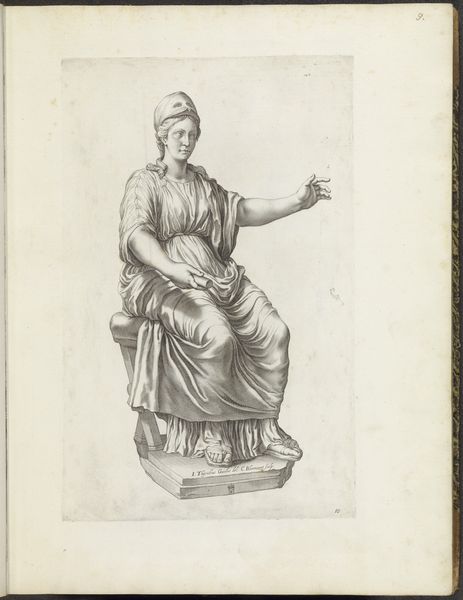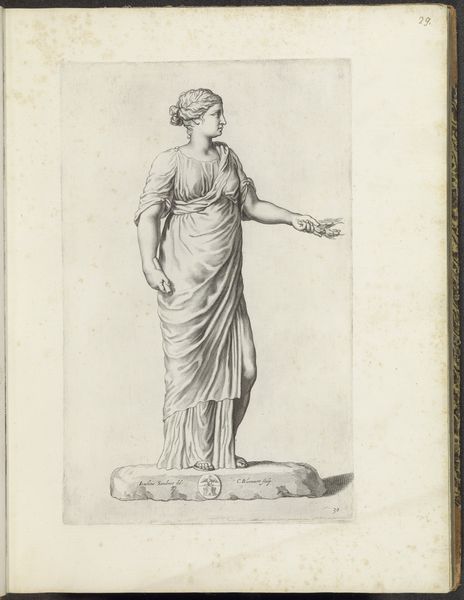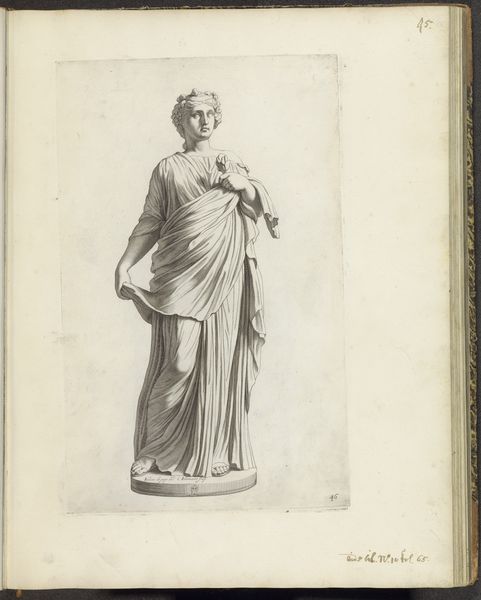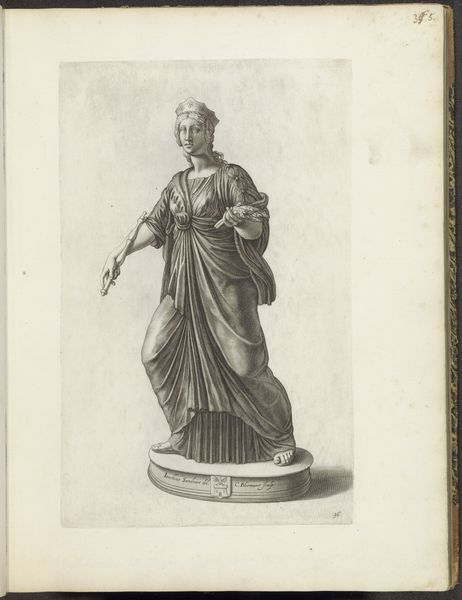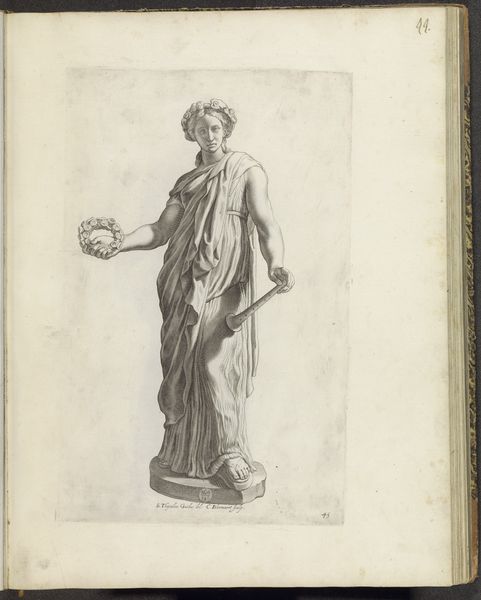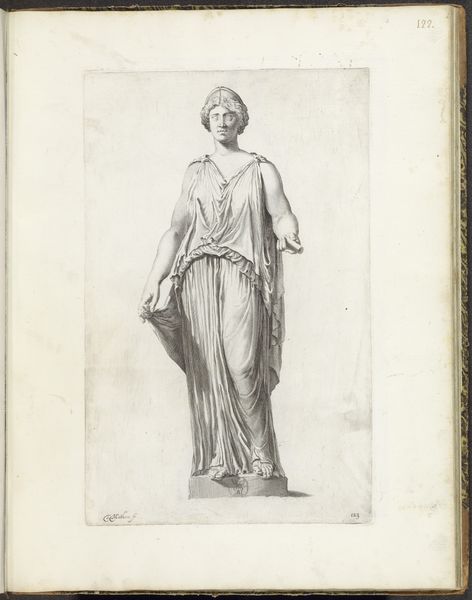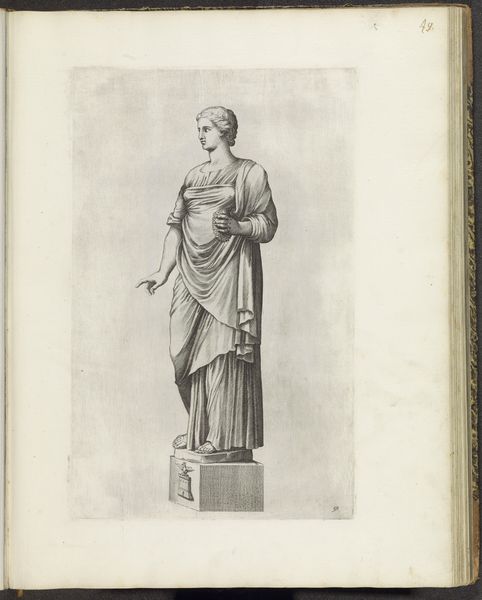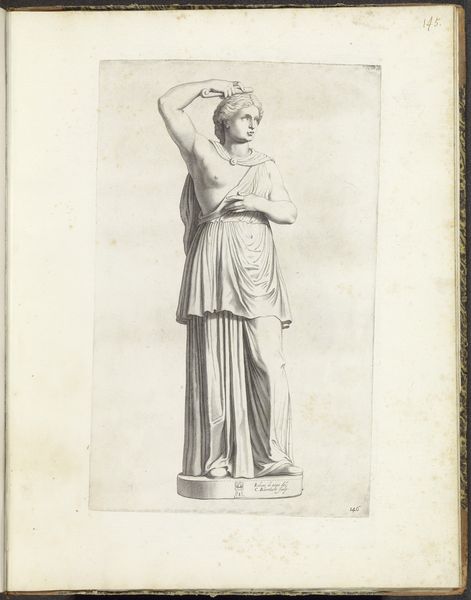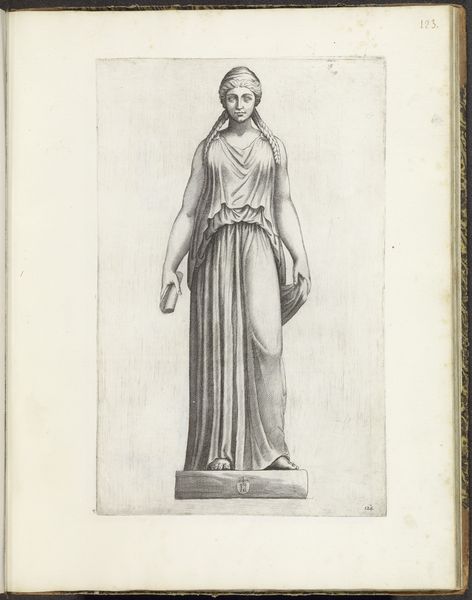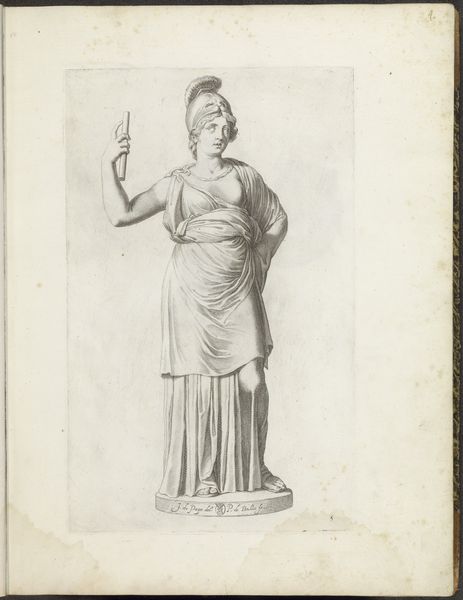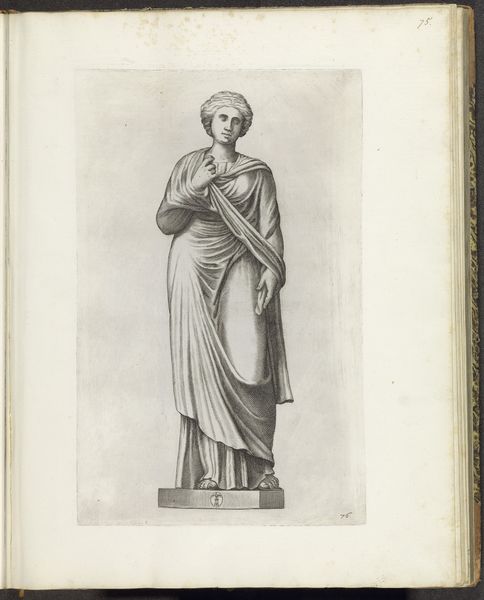
drawing, paper, ink, engraving
#
portrait
#
drawing
#
allegory
#
pencil sketch
#
figuration
#
paper
#
ink
#
pencil drawing
#
ancient-mediterranean
#
engraving
Dimensions: height 372 mm, width 235 mm
Copyright: Rijks Museum: Open Domain
Editor: This is a drawing called "Statue of a Goddess with a Cornucopia" made between 1636 and 1647 by Luca Ciamberlano. It looks like it's made with ink on paper and is currently at the Rijksmuseum. I’m struck by the delicate linework, almost as if it's tracing a sculpture. What stands out to you? Curator: The engraving immediately makes me think of the printing press and its transformative impact on the dissemination of knowledge and artistic styles. Consider the paper itself - its production, its trade, the labor involved in its creation. Ciamberlano isn’t just representing the goddess; he’s participating in a process that democratizes access to classical imagery, moving it from exclusive elite collections to a wider audience. How does that altered distribution shape its significance? Editor: So, you're saying the value lies not just in the image itself, but in how it became available? Curator: Precisely. Think about the artist's hand, carefully etching lines onto a metal plate, then transferring that image onto paper through the mechanical action of a press. It's a fascinating intersection of skilled labor, mass production, and the creation of "art." This isn't a unique masterpiece; it's one of many. Where would prints like these have circulated, and what functions could they have served? Editor: Maybe educational, like study aids for artists learning classical forms? Curator: Indeed! Also as pattern books for craftspeople who translated these forms into furniture or other decorative arts, which blurs the line between 'high art' and the everyday environment. Seeing that object made me realize it is deeply embedded in networks of production and circulation that change how we value classical imagery. Editor: I never thought about engravings that way. Now I’m wondering about the social implications of art production! Thanks for shifting my perspective.
Comments
No comments
Be the first to comment and join the conversation on the ultimate creative platform.
